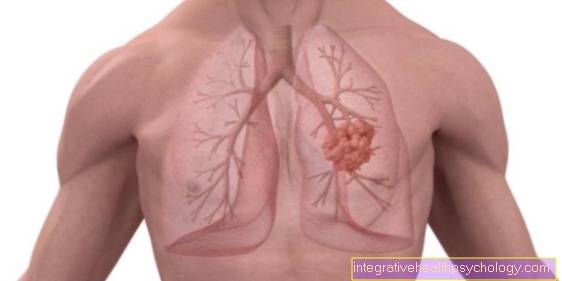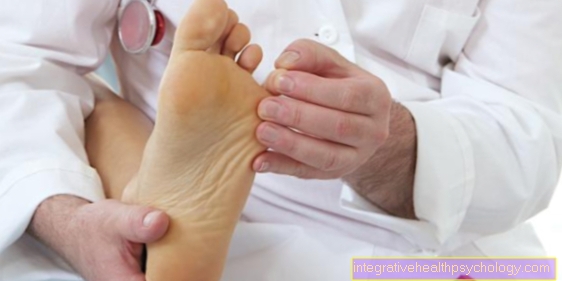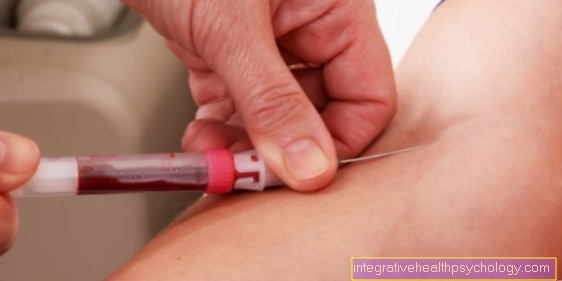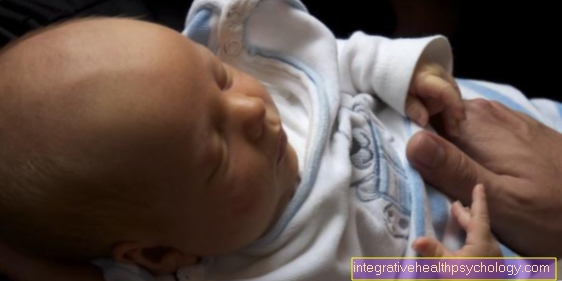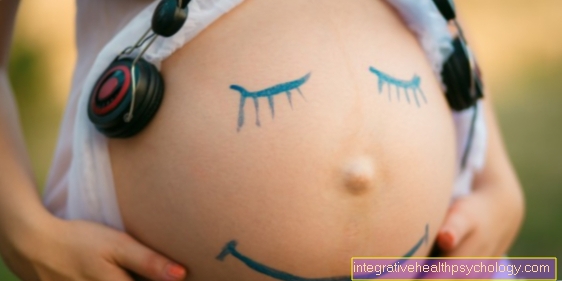Diarrhea after milk - is it caused by lactose intolerance?
introduction
Diarrhea after consuming milk describes the occurrence of thin stool with increased stool frequency, which is temporally related to previous milk consumption. Diarrhea is medically defined as having more than 3 bowel movements a day with a high water content. However, the term diarrhea is also often used when it is only a matter of stopping thin stool.

Causes of diarrhea after consuming milk
If diarrhea symptoms occur repeatedly after consuming milk or dairy products, this can be an indication of lactose intolerance.
If the symptoms do not occur after every milk consumption, but only occasionally, lactose intolerance is rather unlikely. Other possible causes of diarrhea that is temporally related to milk consumption are the consumption of milk with an expired best-before date, gastrointestinal infections or other intolerances.
For more general information, we recommend our website: Causes of diarrhea
Lactose intolerance
The classic leading symptom of lactose intolerance is diarrhea, which occurs relatively soon after consuming dairy products. 15-20% of people in Germany are lactose intolerant. That is comparatively little compared to 70% of the world's population.
Lactose intolerant means that there is an enzyme deficiency. Lactase is an enzyme that is found in the small intestine and breaks down the lactose contained in dairy products, making it digestible. If this does not happen, the lactose reaches the lower digestive tract undigested, where it is broken down by bacteria. This creates gases that lead to flatulence, diarrhea and abdominal pain.
A distinction is made between primary and secondary lactose intolerance. In the secondary form there is only a temporary decrease in lactase activity, for example in the context of gastrointestinal infections or diseases such as celiac disease (gluten intolerance) and inflammatory gastrointestinal diseases such as Crohn's disease or ulcerative colitis.
Find out more about this topic at: Lactose intolerance
Accompanying symptoms of diarrhea after consuming milk
Typical accompanying symptoms of recurring diarrhea after consuming milk are abdominal pain, abdominal cramps, nausea, flatulence and a feeling of fullness.
The symptoms of lactose intolerance appear at least 30 minutes after consuming milk and can last for 6-9 hours. Often those affected can tolerate a certain amount of milk (products), as a certain enzyme activity is still present. If this threshold is exceeded, i.e. more milk product is consumed than can be broken down by the lactase that is still present, the symptoms mentioned occur.
The severity of symptoms can vary depending on the amount of milk product consumed. It may well be that a small amount of milk in coffee does not cause any symptoms in some people with lactose intolerance, but in others this amount is sufficient to trigger diarrhea and abdominal pain. However, larger amounts of lactose cause symptoms for anyone with a lactose intolerance.
Since diarrhea after consuming milk is often caused by lactose intolerance, you should also read our page on: Symptoms of lactose intolerance
Flatulence
Flatulence is a typical symptom of diarrhea after consuming milk. If there is lactose intolerance, the flatulence is caused by the fact that the insufficiently absorbed (reabsorbed) lactose in the small intestine reaches the large intestine and is broken down by the intestinal bacteria located there. This creates gases that can cause abdominal pain, a feeling of fullness and flatulence.
Diagnosing lactose intolerance
If diarrhea symptoms occur only once after consuming milk, further diagnostic measures are usually not necessary. The typical symptoms, i.e. the recurring occurrence of gastrointestinal problems after consuming dairy products, are the main criteria for securing the diagnosis of lactose intolerance.
A so-called H2 breath test can be performed to confirm the diagnosis. Here the patient consumes a certain amount of lactose. After certain time intervals, the hydrogen concentration in the patient's breath is measured. If the value is above the normal value, this - in conjunction with the clinical symptoms - indicates a lactose intolerance.
Find out more about this topic at: Lactose intolerance
Treatment for lactose intolerance
If diarrhea episodes persist after consuming milk, it is relatively probable that lactose intolerance is present.
If there is such a lactose intolerance, the diet must be changed accordingly. It differs from person to person how much lactose they can still tolerate - despite being lactose intolerant. Some people suffer from gastrointestinal problems such as diarrhea even after taking very small amounts of lactose, while others are symptom-free after taking smaller amounts of lactose. So it has to be tried out individually how much lactose-containing foods the body can tolerate.
Lactose is found in milk and dairy products (yogurt, buttermilk, cream, creme fraiche, butter, milk powder, ice cream, chocolate, nut nougat cream, quark, cream cheese, various types of cheese). However, the proportion of lactose varies greatly, for example hard cheeses have a lower lactose content than soft cheeses. Lactose is also often contained in pastries, cakes and baked goods, but also in finished products. Those affected must first learn to deal with the ingredients and the amounts of lactose in various foods.
There should be a change to a diet that is as low in lactose as possible. Nowadays there are numerous lactose-free products available, for example lactose-free cream and milk or even chocolate. This makes changing your diet easier. The enzyme lactase can also be taken in tablet form. The tablets are available without a prescription in pharmacies or drugstores. Taken before a meal that contains lactose, they can significantly suppress the unpleasant symptoms. The therapeutic approach, however, does not consist in the long-term intake of lactase tablets, but primarily in changing the diet towards a low-lactose diet.
Read more on this topic at: Diet for lactose intolerance
Course of the disease in lactose intolerance
If lactose intolerance is the cause of the diarrhea after consuming milk, the disease is chronic. Symptoms such as diarrhea, gas or abdominal pain will appear after every meal that contains lactose. If the person concerned is on a low-lactose diet, this leads to a rapid and usually complete resolution of the symptoms.
Find out more about this topic at: Lactose intolerance
Duration and forecast
Certain diarrheal diseases associated with milk consumption are short-lived. For example, if the milk was caused by an expired best-before date. There are also types of lactose intolerance that are temporary, for example in the context of gastrointestinal infections, but also in the case of untreated celiac disease (gluten intolerance). In such cases, symptoms may completely resolve after a few weeks or months. However, if there is primary lactose intolerance, it is usually chronic, i.e. it lasts for a lifetime. However, lactose intolerance has no influence on life expectancy.
How contagious is that?
If the diarrhea after consuming milk is not caused by a gastrointestinal infection (and thus only occurred by chance after consuming milk), it is usually not contagious. Lactose intolerance - whether temporary or chronic - is not infectious, so it cannot be transmitted from person to person.





